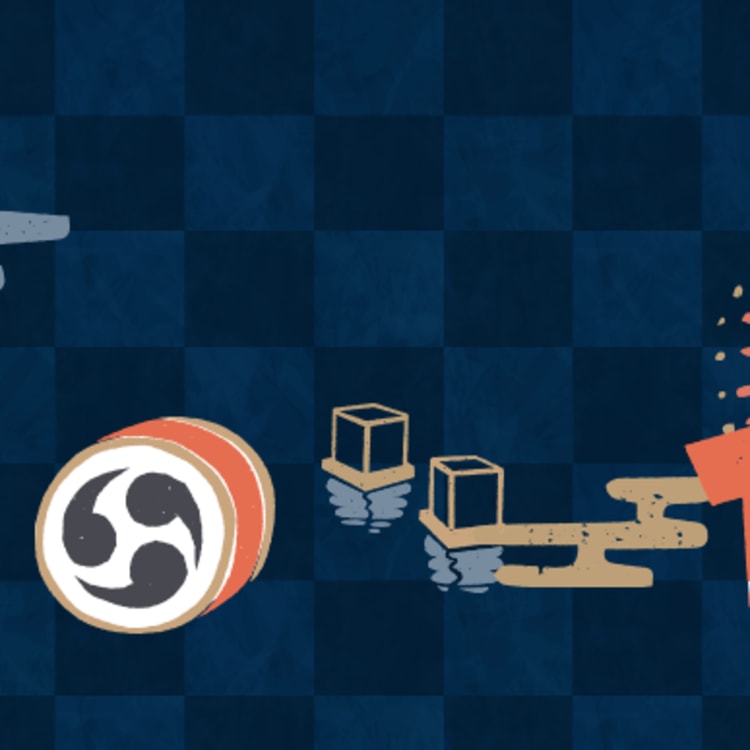
Story MATSURI GUIDEBOOK Published in 2022
Matsuri, Japanese Festivals
Just like in many cultures around the world, the Japanese have embraced festive events as the opportunity to connect with the community, celebrate their heritage, and enjoy good company. For thousands of years, festivals have been hosted to highlight a variety of occasions: spring to pray for bountiful crops, summer to ward off disease, fall to thank for their harvests, and winter to celebrate the New Year.
The Japanese word for festivals is ’matsuri’ which is derived from the verb ‘matsuru’ meaning "to enshrine" deities. Many festivals are thus closely related to the country’s cultural belief that deities reside in all things. Today, the term ’matsuri’ is used to describe a wide range of celebrations other than the Shinto rituals performed by shrines. These celebrations include well-known events like community and school events as well as those that are connected to the seasons and culture, such as the Hana-Matsuri (Flower Festival) and Hina-Matsuri (Doll Festival).
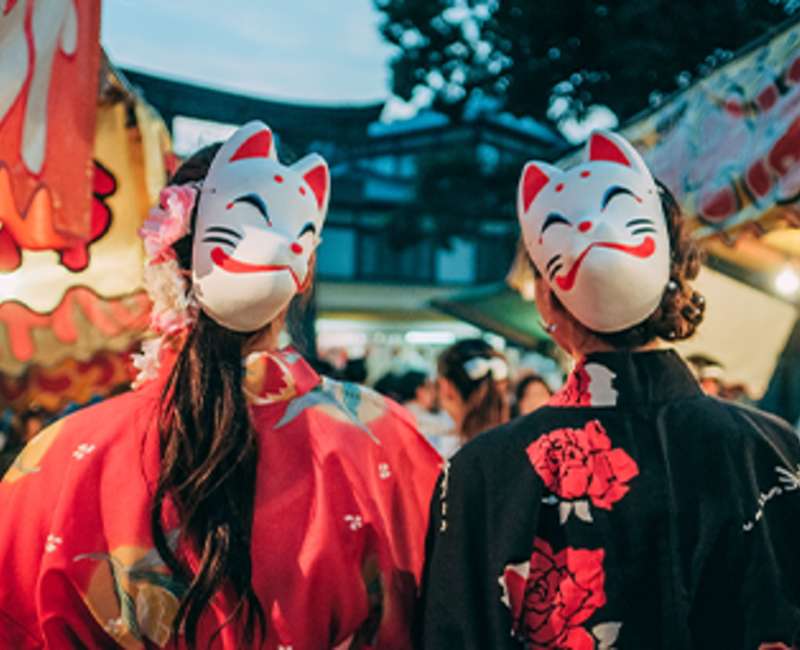
Yukata, the go-to style for festival wear
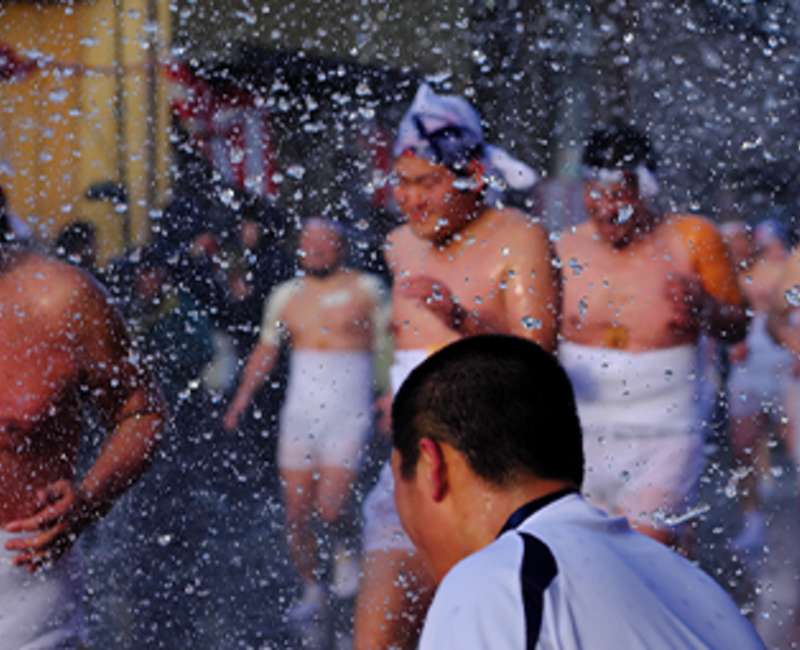
A festival of participants being doused with water in the intense cold at the Daito-Ohara Water Throwing Festival in Iwate Prefecture
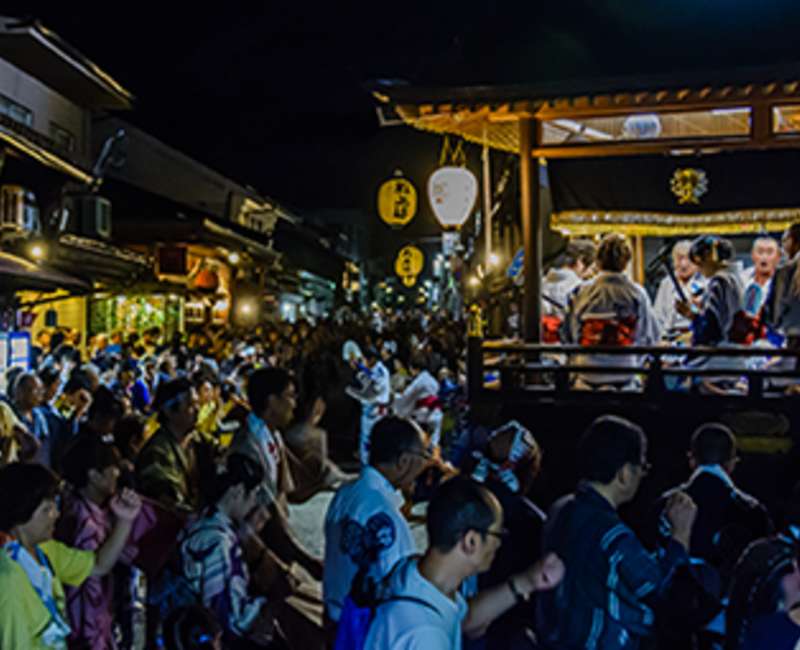
Dance from sunset to sunrise during the Gujo Odori Festival in Gifu Prefecture
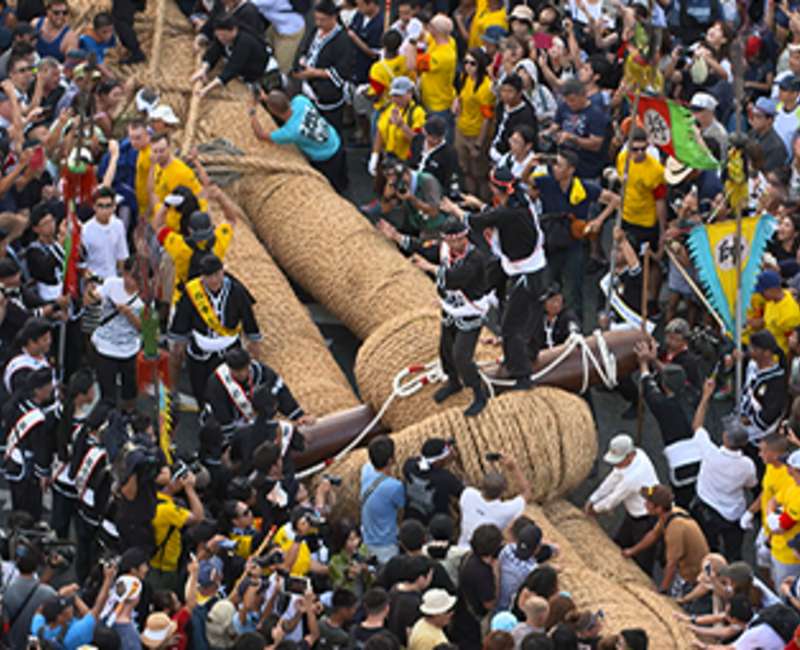
Join the Naha Great Tug-of-War in Okinawa Prefecture, one of the greatest tug-of-war competitions in the world
Matsuri Staples
MIKOSHI
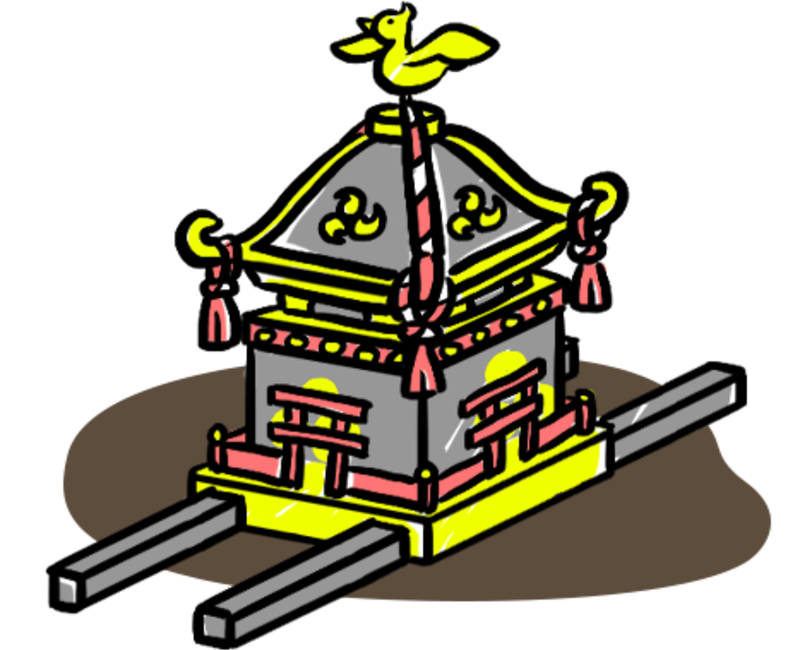
The mikoshi is a portable shrine for the deities to travel out of their shrines. It is said that during festivals, the Japanese deities visit the local community by riding on the mikoshi, and chase off bad spirits from the region. The mikoshi is usually extravagantly decorated and resembles a miniature shrine as it has to temporarily house the deity. Once the mikoshi has made its rounds, it is brought back to the shrine so that the deity may return to it.
BON ODORI (BON FESTIVAL DANCE)

Bon odori is a dance typically performed during the Obon period in mid-August where the Japanese honour the spirits of their ancestors. People gather to dance in a circle around a high wooden stage or yagura, to the accompaniment of songs using instruments such as shamisen and taiko drums. The appeal of this dance is that it is easy enough for anyone to perform, so you don't even need to know the steps beforehand. Join in the fun and dance with the locals for an authentic matsuri experience.
YUKATA
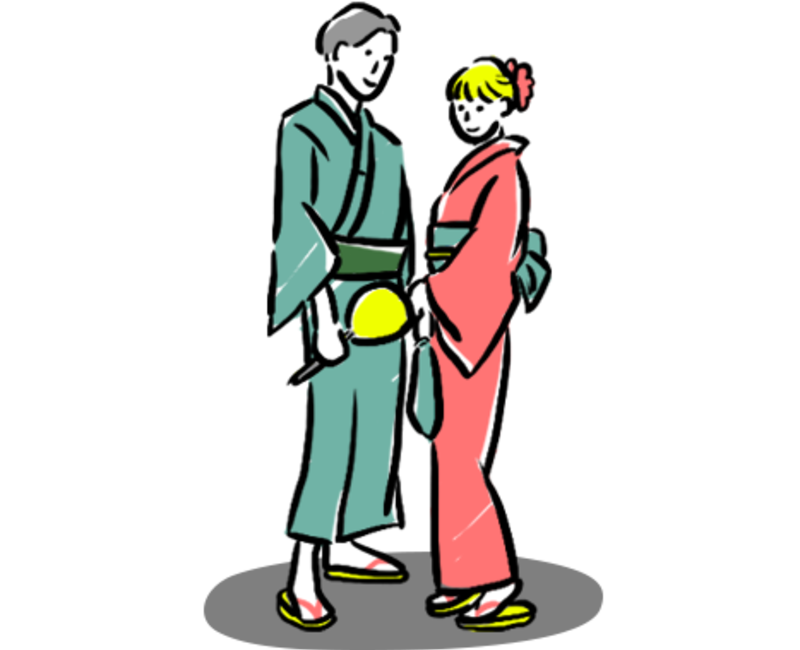
The yukata is a casual kimono that is easy to wear and the light cotton material makes it ideal for the hot summer weather. It is frequently spotted being worn at bon odori and firework festivals. Yukatas are easy to wear as they don't require an obiage (obi belt bustle) or obijime (decorative cords for the obi belt) and only have one layer of clothing compared to other types of kimonos. There are yukata rental shops available as well. Why not rent one on your next trip to Japan and take part in the matsuri?
HAPPI
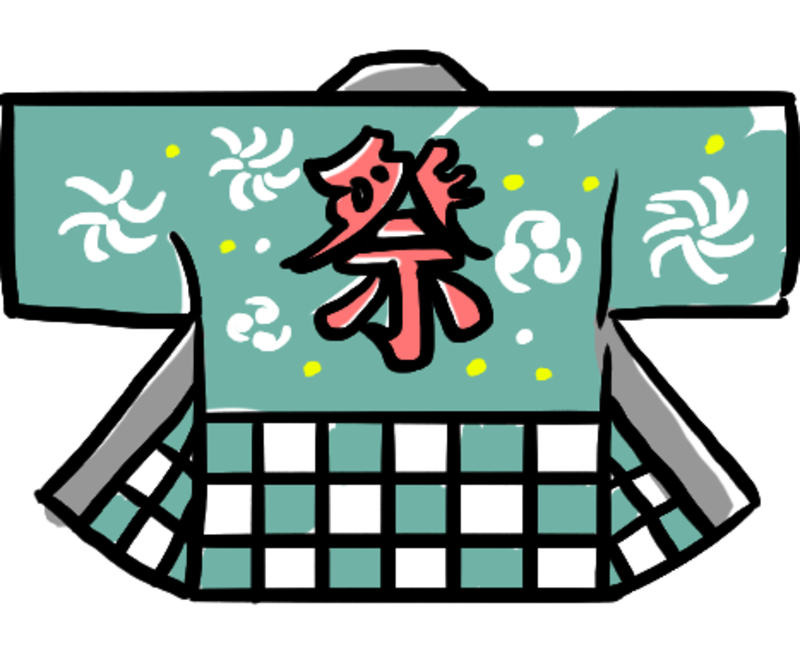
The happi coat, which was once worn by craftsmen as a uniform during the Edo period (1603–1868), is now a traditional outfit frequently seen at festivals. They are typically knee-length or fall below the waist and have the Japanese character for matsuri on the back for those used during festivals. You will see festival staff or dancers wearing them during performances.
OMEN

Omen is the Japanese word for masks which are frequently spotted at celebrations around the country and are known to be used in the traditional performing art of Noh. A common summer festival scene in Japan is people wearing yukatas (summer kimonos) with masks. You can find masks of all types including popular anime characters sold at the vendors of most festivals. It also makes for a good souvenir to bring back home the memories of the matsuri. Do try on a mask and join in the festivities!
Matsuri Etiquette
Festivals are places for fun and entertainment, but following the proper etiquette is also important to ensure all participants have an enjoyable time. If you're new to Japanese festivals, here are a few tips on what to pay attention to.
Taking pictures
While it's easy to get caught up in the excitement of a new experience and the desire to post them on social media, it's important to remember that there are certain parts of life that require more privacy. It is considered respectful to refrain from taking pictures of prayers in front of the deities, as well as uploading personally identifiable photos to social media.
Small festivals in the neighborhood
Throughout Japan, hundreds of festivals are held each year, with some being citywide and others small local gatherings. While they are a great opportunity to experience the unique culture of each area, not all festivals are open to the general public. Some festivals are held at schools or other educational facilities such as universities where only those attending can enter school grounds. Do make sure to respect the rules of the festival.
Looking for help
If you ever face any troubles at a festival, try looking for a festival staff or booth. Most festivals have a booth with festival staff manning it where you can get help with lost items, directions, and any other problems. Remember that it's okay to ask for help if you need it - most people are more than happy to lend a hand and make sure that everyone has a great time at festivals!
Paid seating and private property
Fireworks displays and other festivals are where you can really get into the spirit of summer, hearing the sounds of traditional Japanese music and seeing spectacular fireworks light up the night sky. Most of the time, these events are held outdoors, and you can enjoy them from wherever you'd like! A lot of festivals also have paid seating providing the best view of the performances. Book a seat beforehand for a one-of-a-kind experience or simply find a spot in the surrounding area of the festival. Having a mat to sit on would also be convenient especially when watching fireworks outdoors. Just make sure that you don't enter the paid seating area, private property (private houses, etc.) or dangerous areas.
Bring cash
If you're planning on visiting a festival and thinking about purchasing food or goods from vendors, it is a good idea to plan ahead by bringing enough cash for your purchases. In most cases, festival vendors accept cash only. It is recommended to come prepared with plenty of coins and 1,000-yen bills.
Matsuri Calender
Winter |
◆Sapporo Snow FestivalEarly February |
◆Chichibu Yomatsuri (Night Festival)December 2 and 3 |
◆Saidaiji Eyo Festival (Hadaka Matsuri)Third Saturday of February |
Spring |
◆Sanja MatsuriThird weekend of May |
◆Johana Hikiyama Matsuri FestivalMay 4 and 5 |
◆Onbashira Festival (Shikinen Zoei Mihashira Taisai)April and May every 6 years |
◆Takayama FestivalApril 14 and 15, and October 9 and 10 |
◆Aoi Matsuri Festival (Kamo Festival)May 15 |
◆Shuni-e Ceremony (Omizutori Festival)March 1 to 14 |
Summer |
◆Sendai Tanabata FestivalAugust 6 to 8 |
◆Akita Kanto FestivalAugust 3 to 6 |
◆Omagari HanabiLast Saturday of August |
◆Yamagata Hanagasa FestivalAugust 5 to 7 |
◆Soma Nomaoi FestivalLast Saturday to Monday of July |
◆Gujo OdoriMid-July to early September |
◆Owari Tsushima Tenno FestivalFourth weekend of July |
◆Tenjin FestivalJuly 24 and 25 |
◆Mibu no Hana TaueFirst Sunday of June |
◆Harvest Festival (Purii)June or July of the lunar calendar |
◆Okinawa Zento Eisa Matsuri (All-Island Eisa Festival)Weekend following the Kyu Bon (Bon Festival of the lunar calendar) |
◆Aomori Nebuta FestivalAugust 2 to 7 |
◆Gion MatsuriJuly 1 to 31 |
◆Awa Odori Dance FestivalAugust 12 to 15 |
◆Hakata Gion YamakasaJuly 1 to 15 |
Autumn |
◆Owara Kaze no Bon FestivalSeptember 1 to 3 |
◆Jidai MatsuriOctober 22 |
◆Kishiwada Danjiri MatsuriMid-September and early October |
◆Nagasaki KunchiOctober 7 to 9 |
◆Takachiho Evening KaguraMid-November to early February |
◆Naha Giant Tug-of-War FestivalSecond weekend of October |
◆Shikinen SenguOnce every 20 years |
Published in 2022
















































